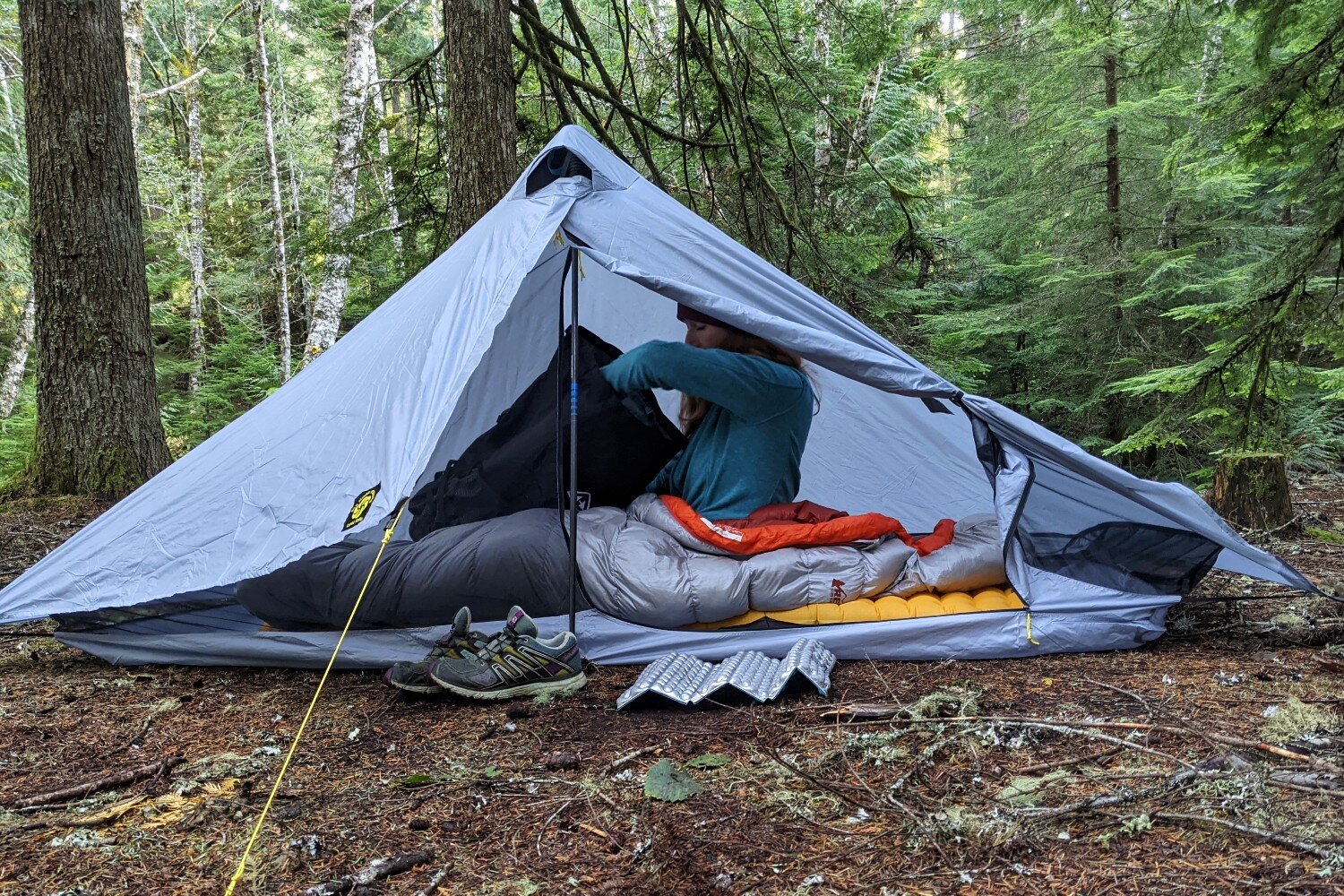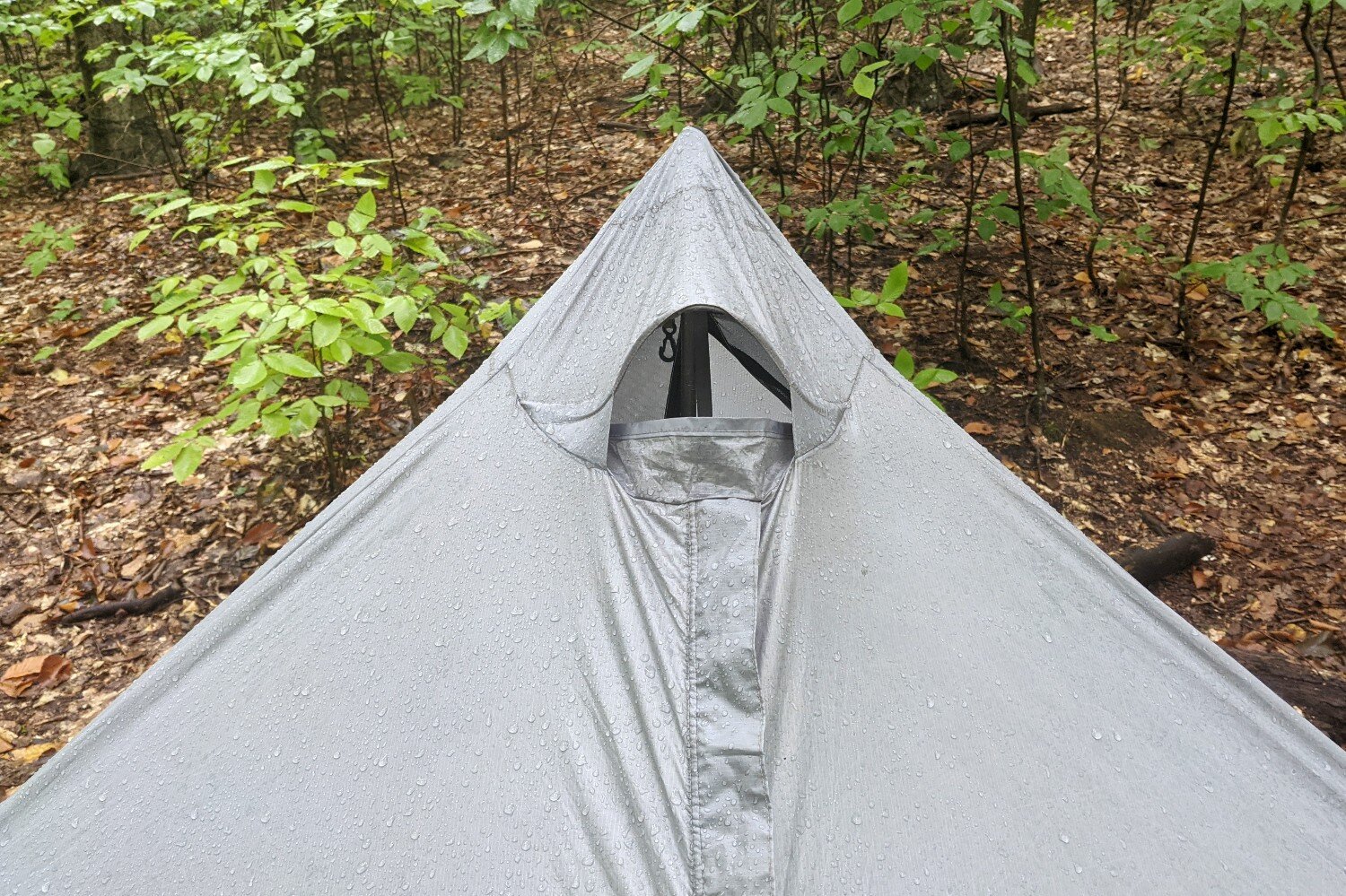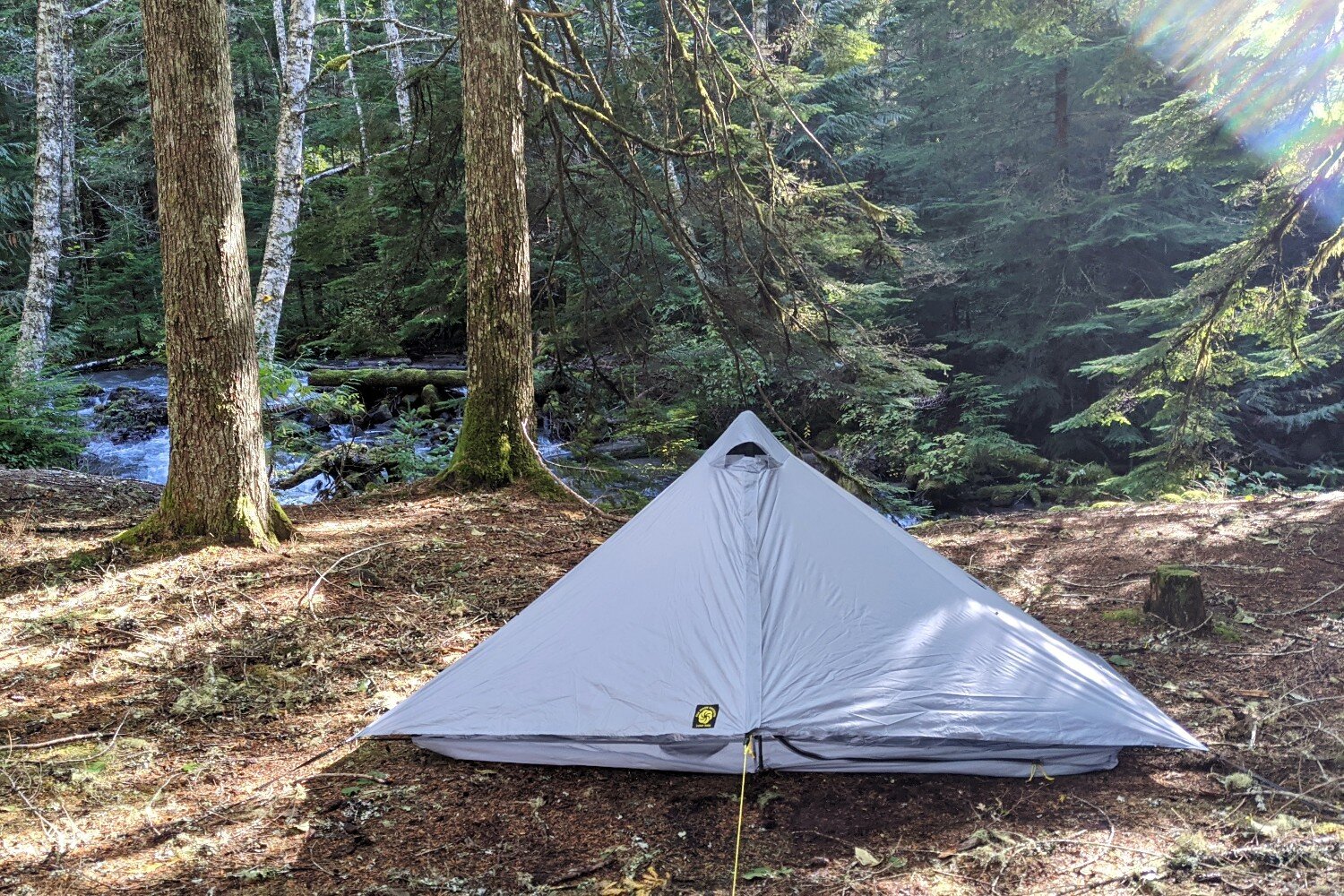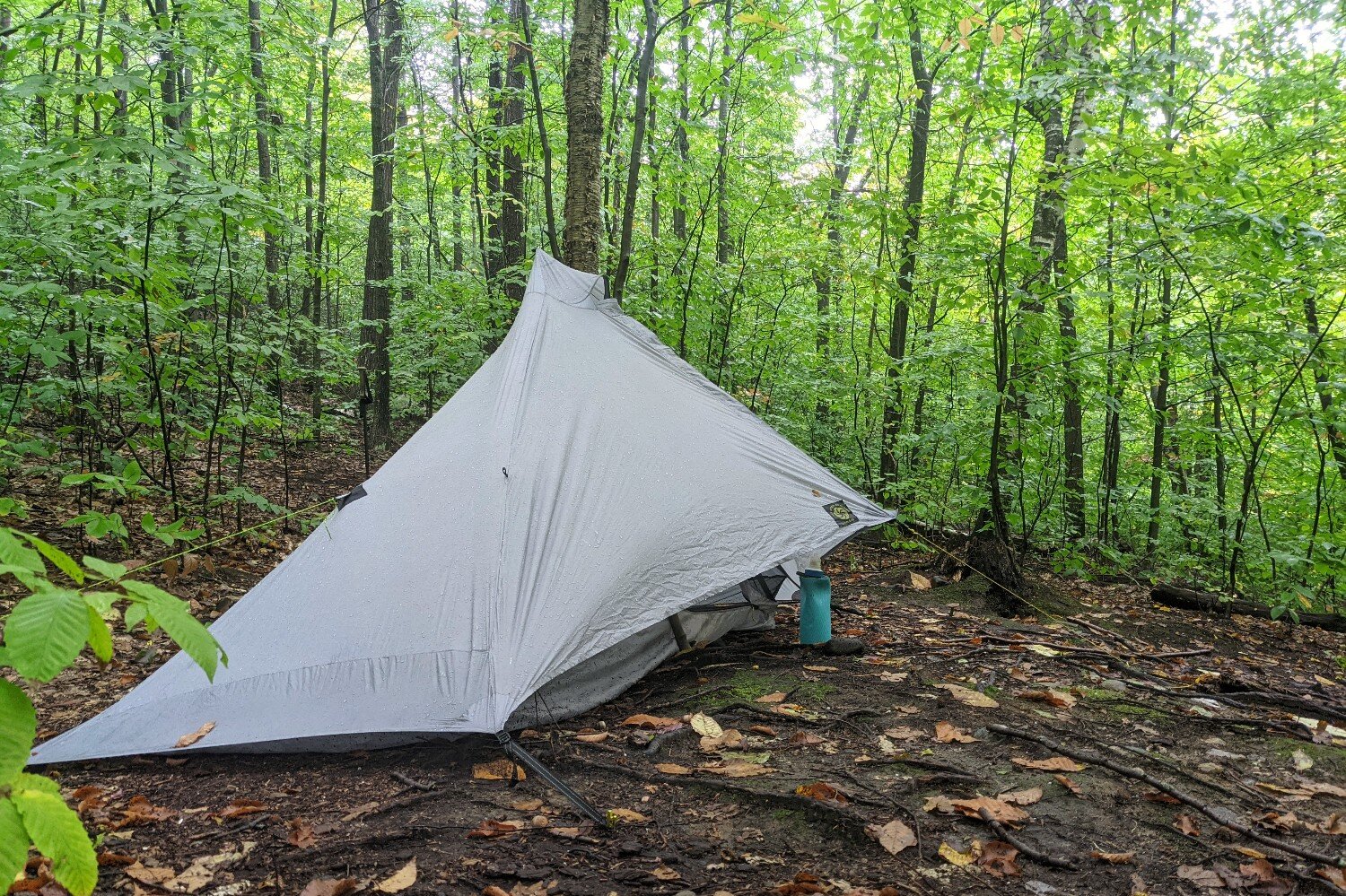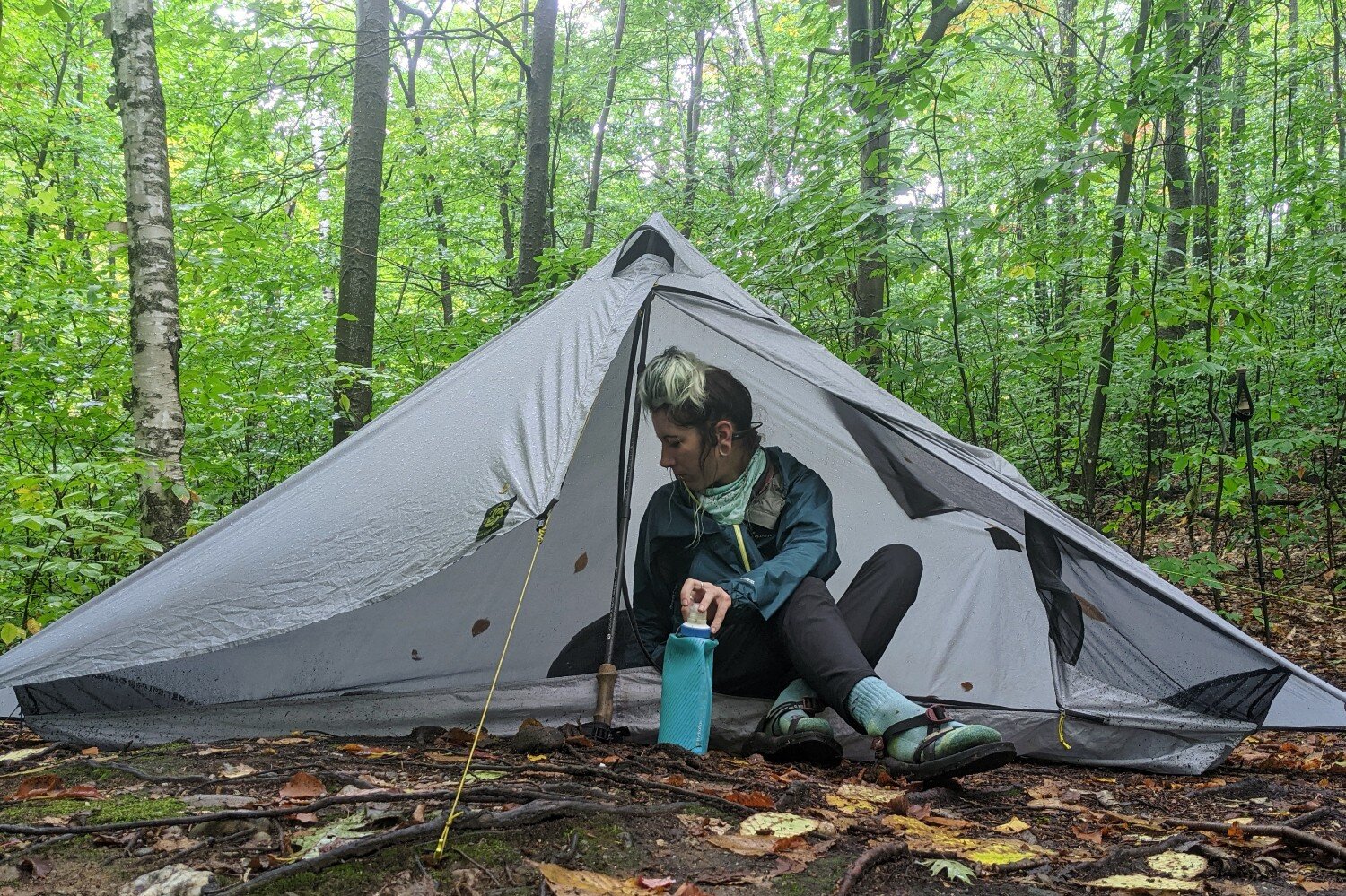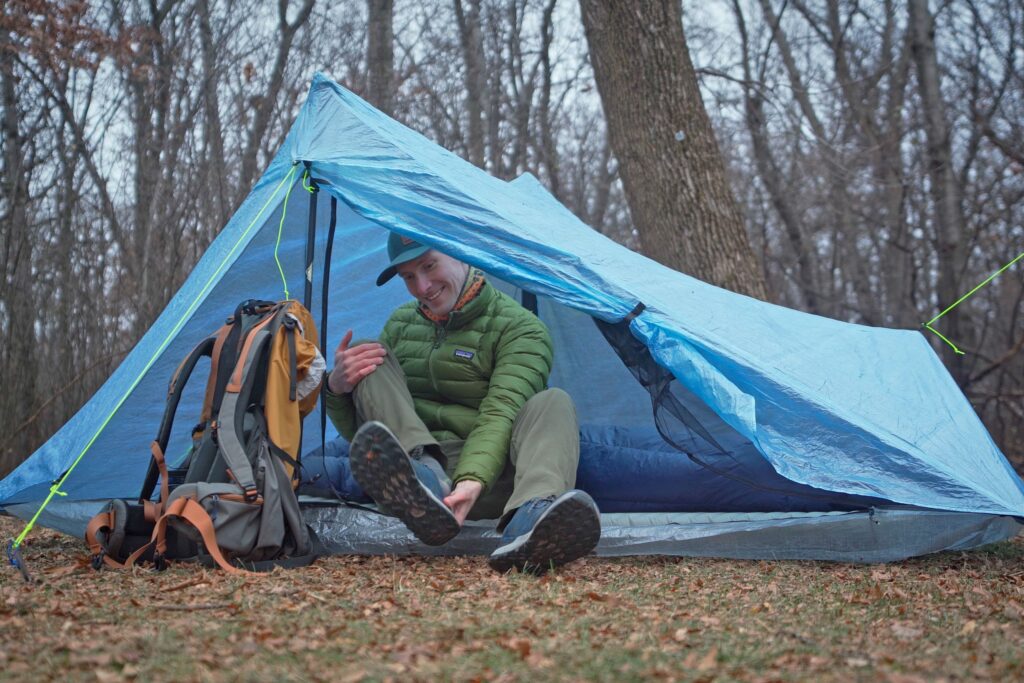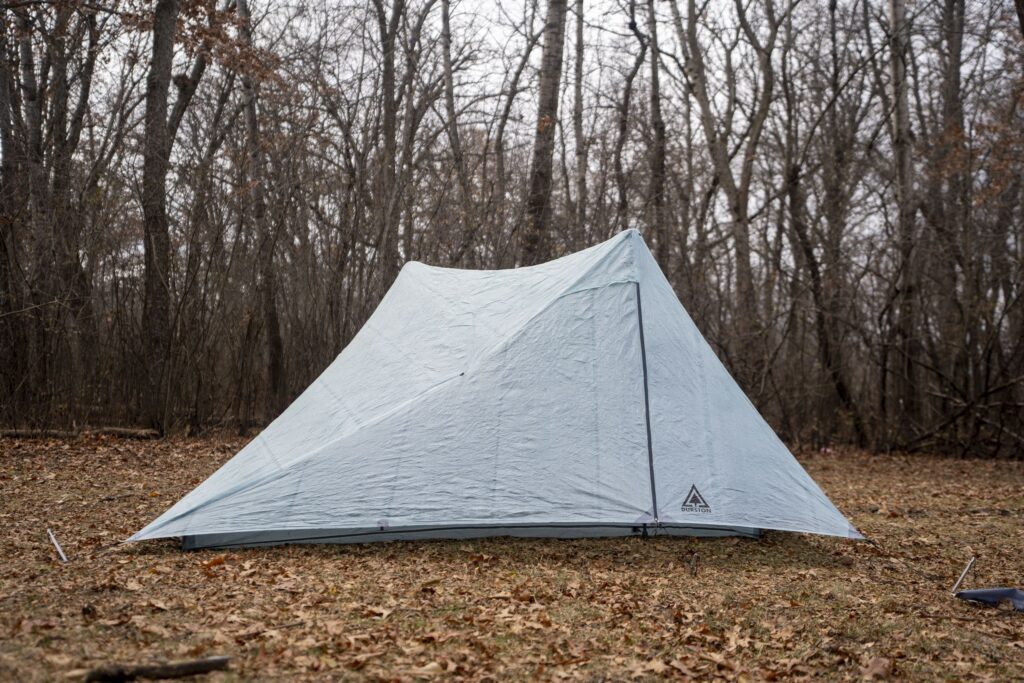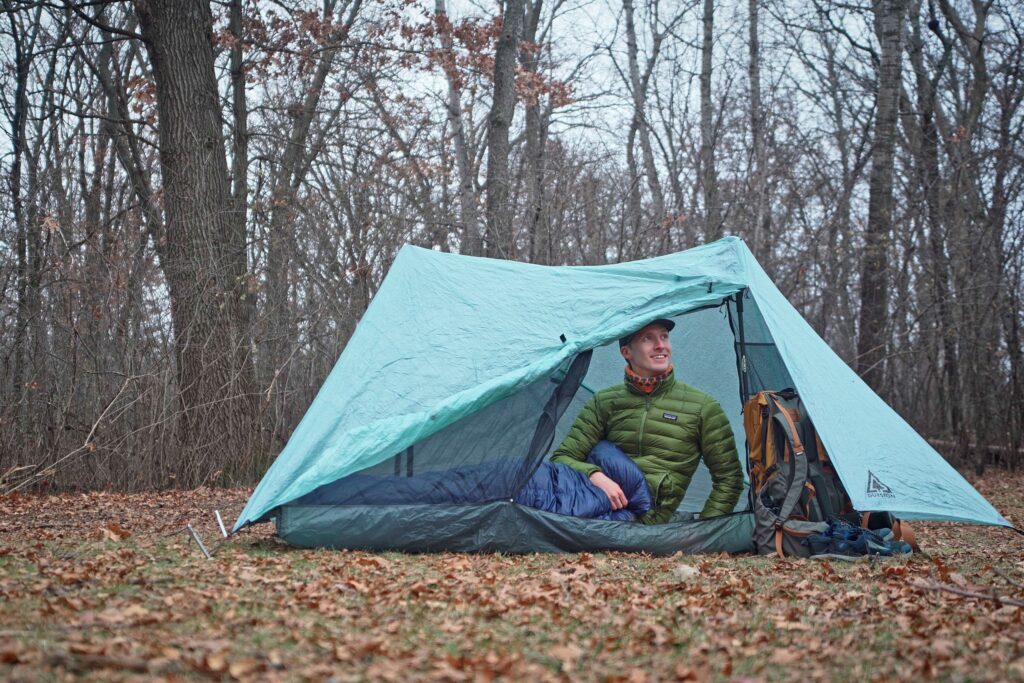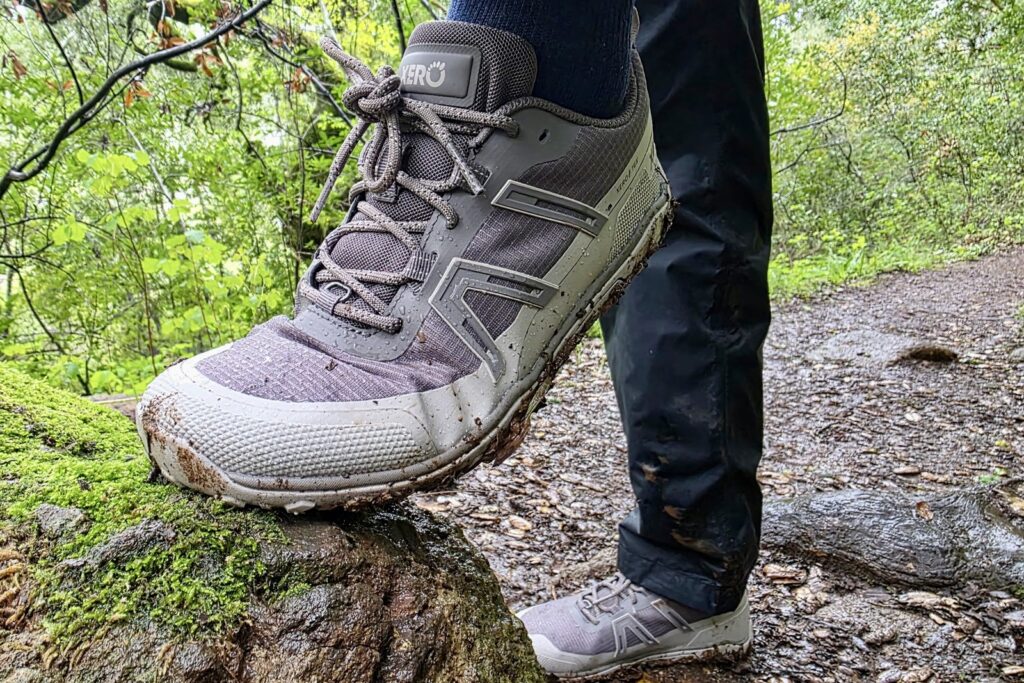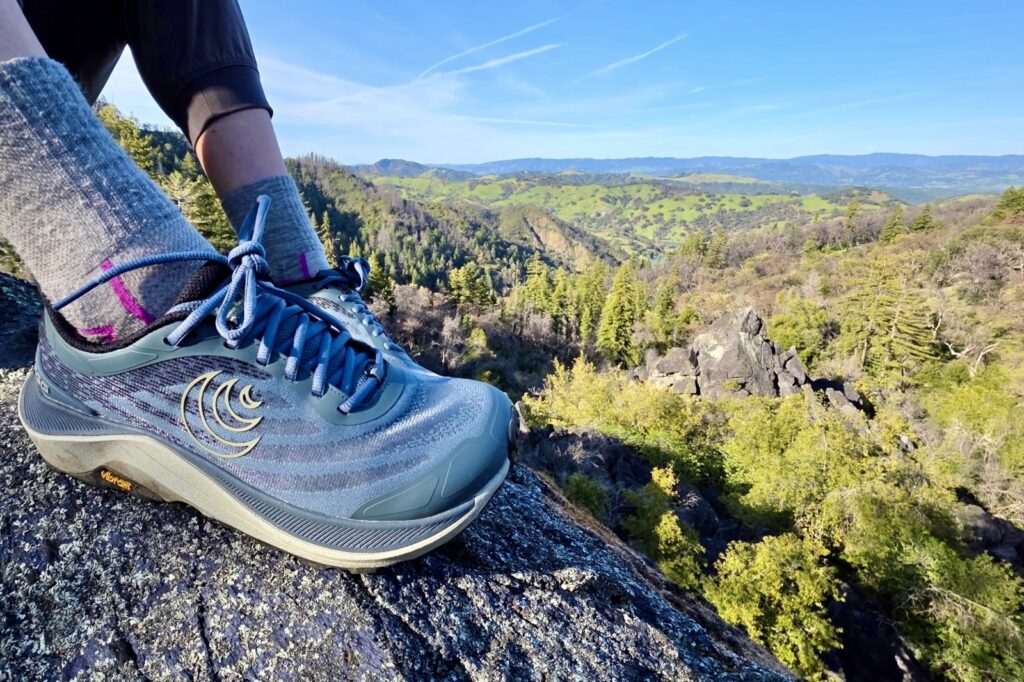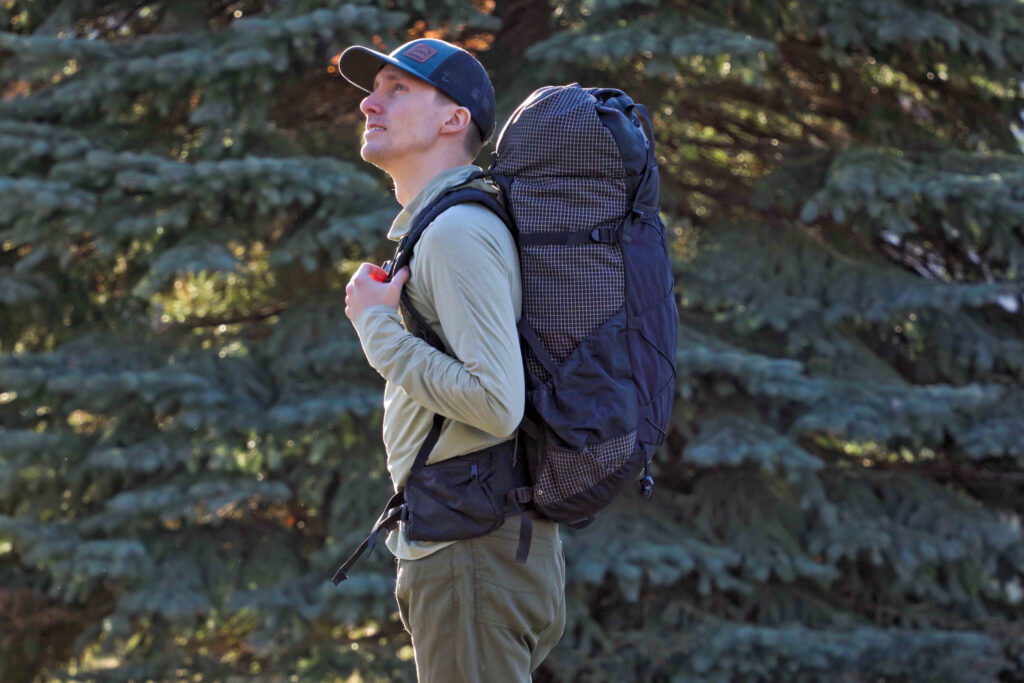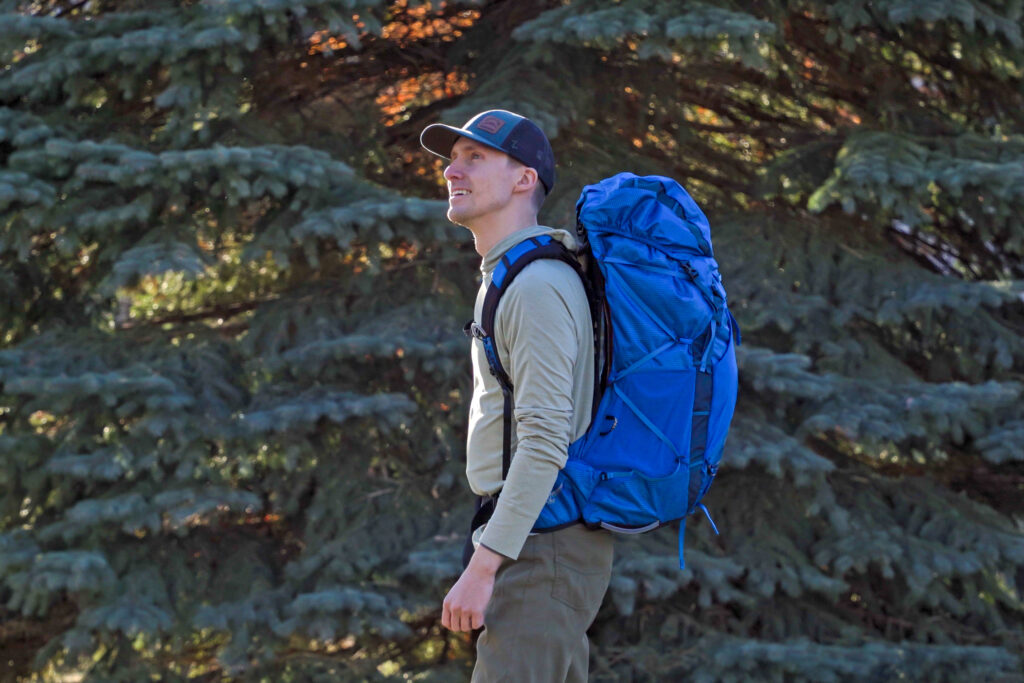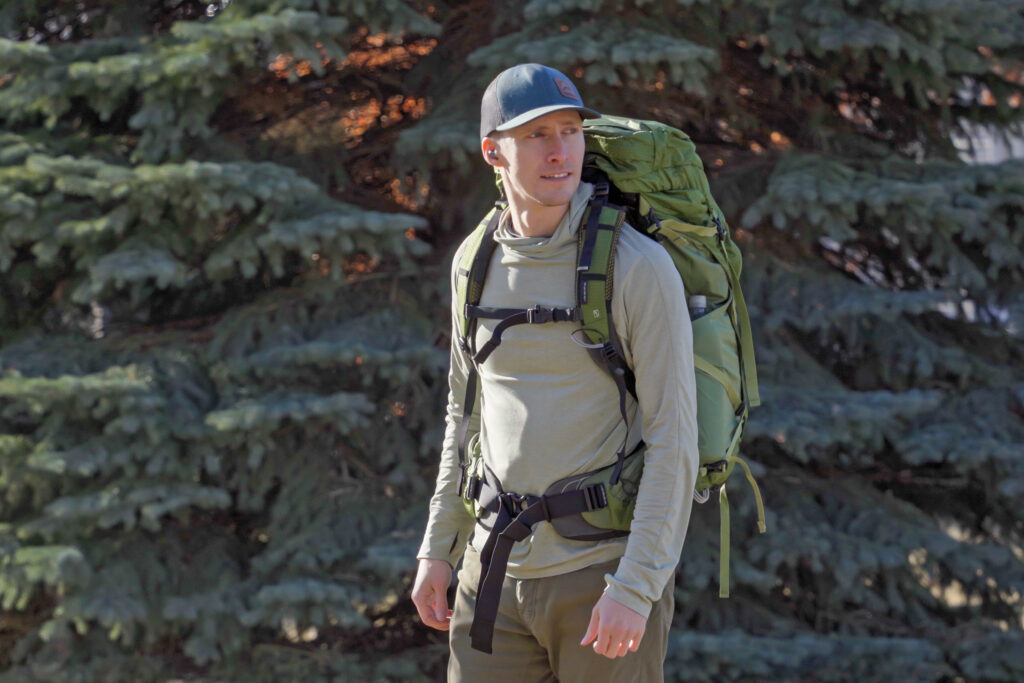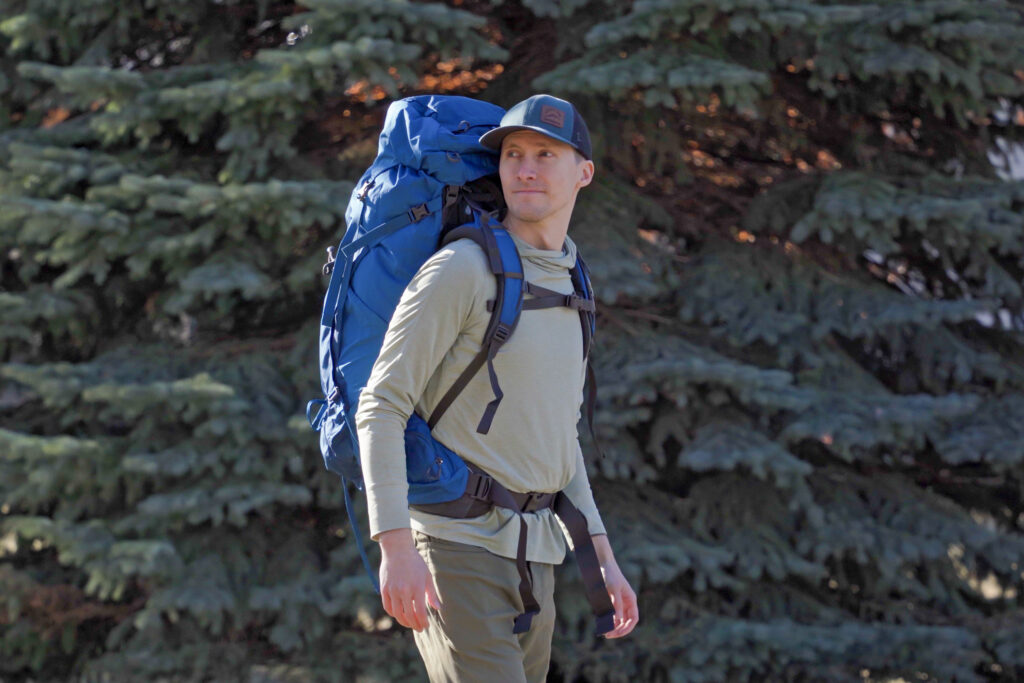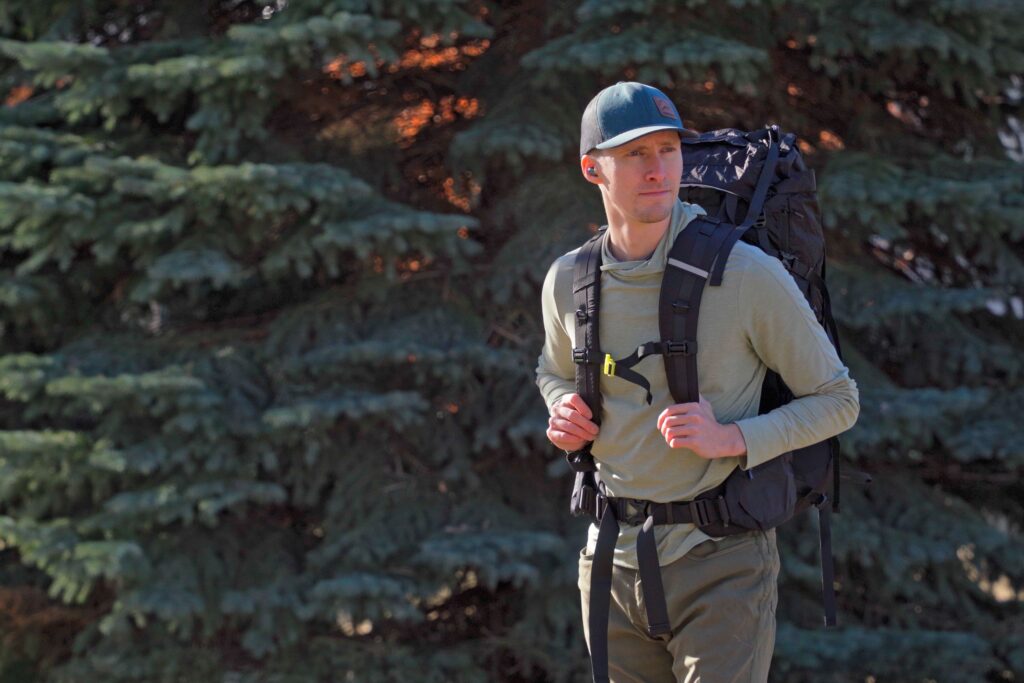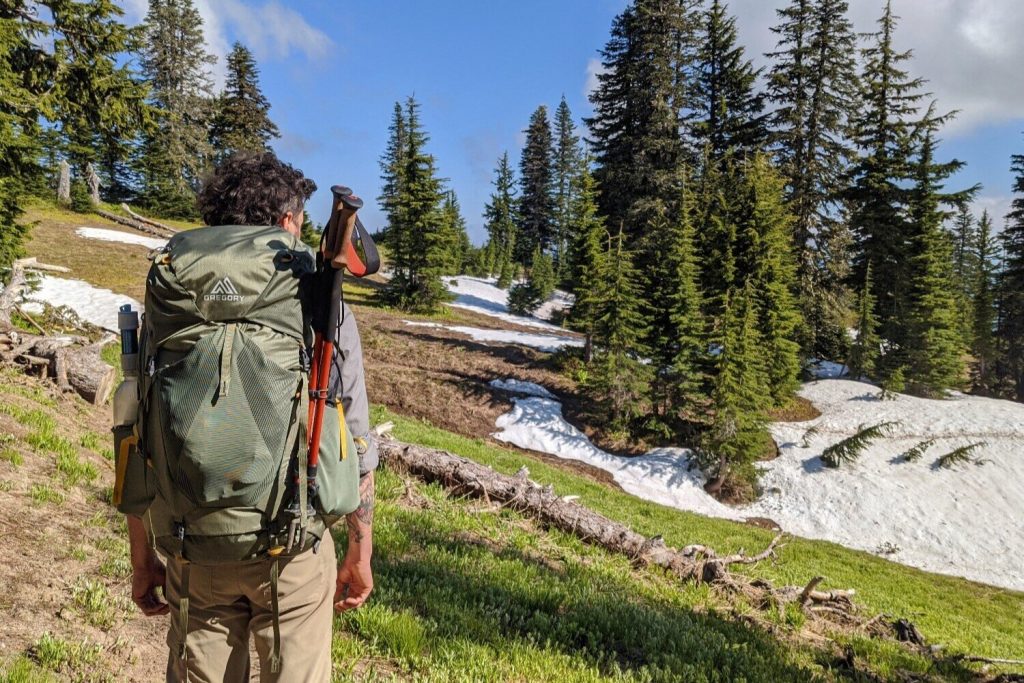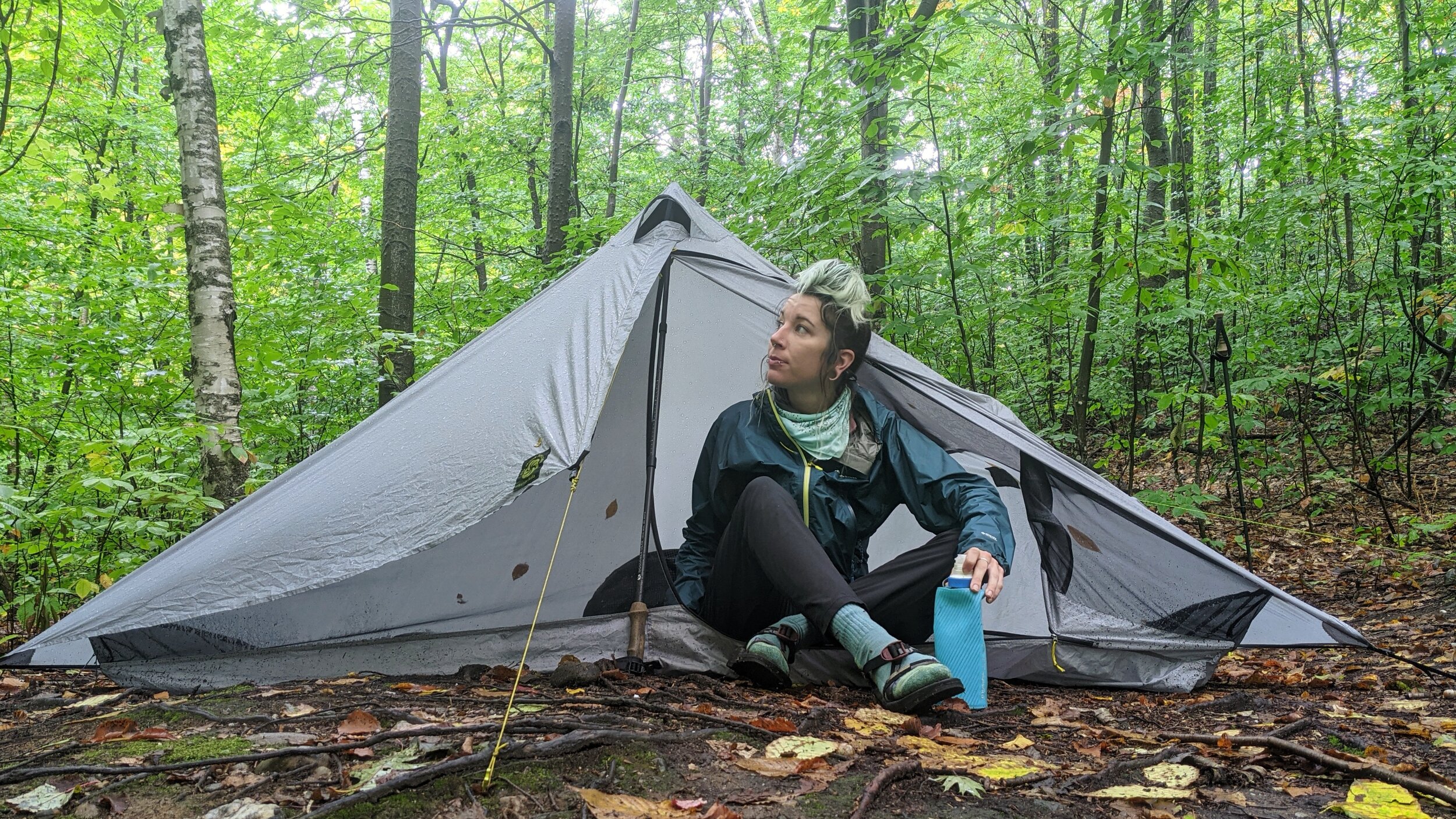
Bottom Line
The SMD Lunar Solo is great for solo backpackers who want a balance of affordability, low weight, and plenty of space in their backpacking tent. At 1 pound and 10 ounces, the Lunar Solo is a standout on our Best Backpacking Tents and Best Ultralight Tents lists because it packs down impressively small yet provides a spacious interior that accommodates taller hikers and easily stashes all your gear. After covering thousands of miles on multiple thru-hikes with the Lunar Solo, CleverHiker’s Heather Eldridge can vouch for its durability, ease of setup, and versatility in the backcountry. Its pyramid shape sheds rain and light snow easily, and effective ventilation elements help reduce interior condensation, an issue common with most single-wall tents. If you’re looking for comfortable, simple, and affordable shelter in the backcountry, the Solo is a great option.
Every tent is flawed, and this model has some drawbacks. It’s easy to set up with practice, though its non-freestanding design can make pitching tricky in tough terrain. The angled side walls limit headroom, so you’ll only sit comfortably in the center without brushing against the tent. Also, Six Moon Designs doesn’t include seam-sealing in the price, so you’ll need to pay extra or do it yourself to make the tent fully waterproof. But these are fairly minor issues. The Lunar Solo is a durable, ultralight shelter at a great price for backpackers wanting to save weight without sacrificing comfort.
Quick Specs
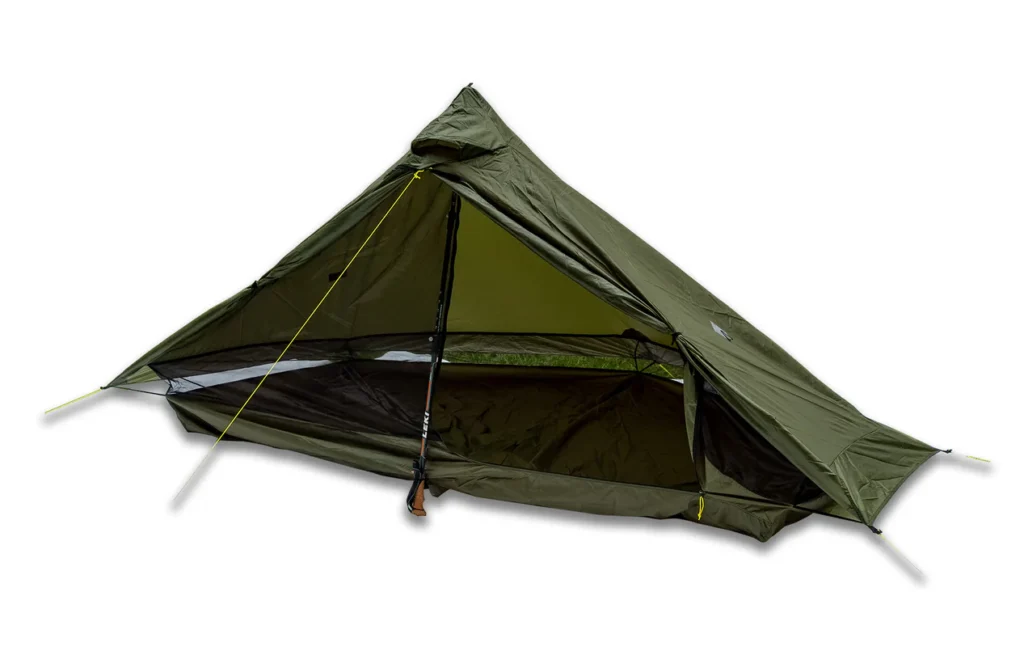
Six Moon Designs Lunar Solo
Price: $250
Measured Weight: 1 lb. 10 oz.
Floor Dimensions (LxWxH): 90 x 48 x 49 in.
Pros
- Affordable
- Ultralight
- Small packed size
- Lots of floor space
- Easy to set up
- Sheds rain well
- Good ventilation
Cons
- Not a ton of head room
- Non-freestanding
- Single-wall tents can have condensation issues
- Doesn't come seam-sealed
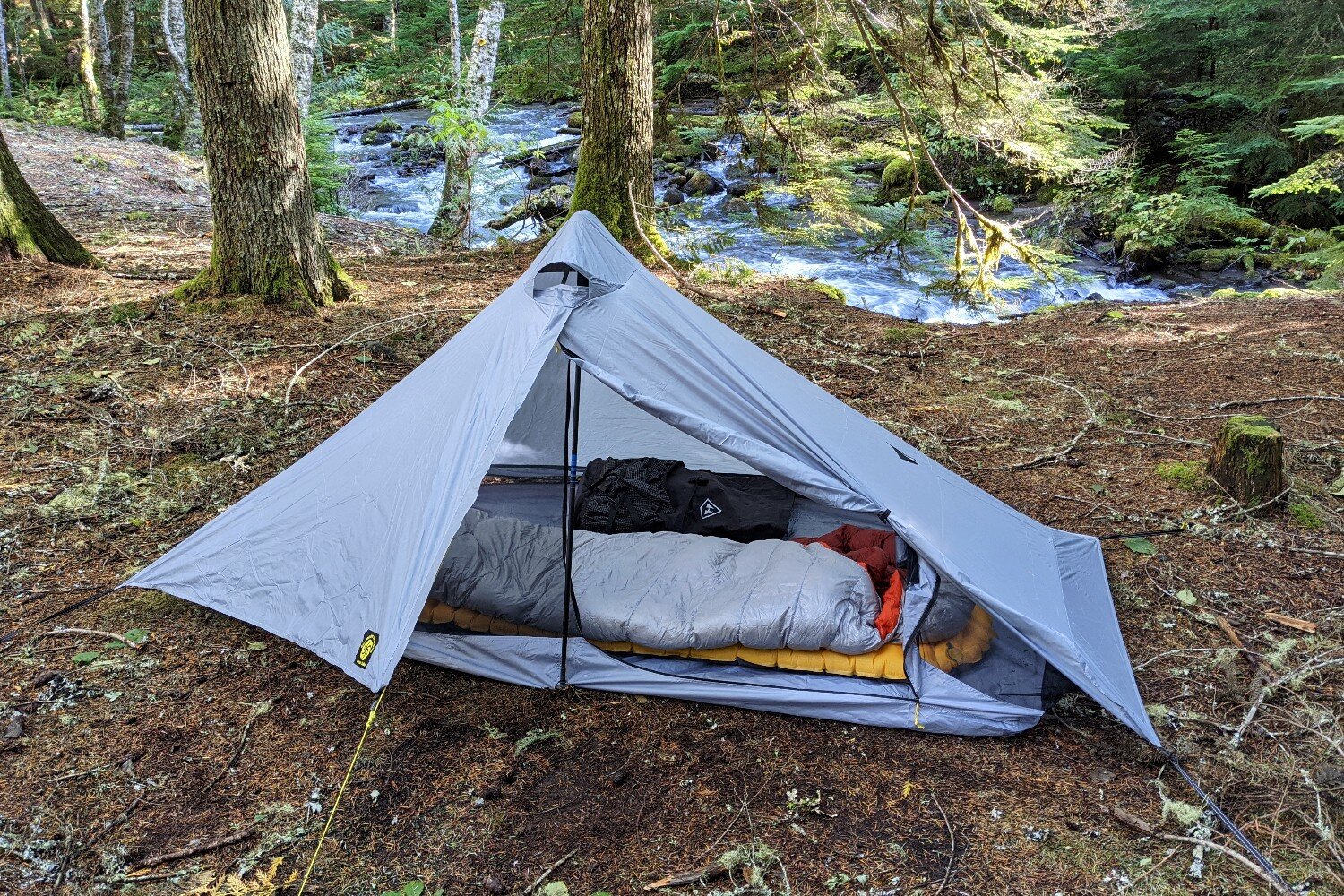
Comfort
The Lunar Solo is a no-frills, non-freestanding tent with essential features you need to stay safe and dry while backpacking. Measuring 90 inches by 48 inches, solo hikers and folks over 6 feet tall will love the spacious floor design, with a ton of room to stretch out compared to most other one-person shelters. These generous dimensions also give you the option to store gear in the vestibules, at your feet or right beside you. We like an internal gear area for keeping larger gear more organized. One mesh pocket works well to stash small essentials like your chapstick, headlamp, or phone. We’re also big fans of the silpoly fabric used on the fly and floor of this tent. The fabric and ample mesh make for a quiet shelter that keeps condensation at bay for a comfy night’s sleep.
However, folks who want more room to sit up or livable features like plenty of pockets may be underwhelmed with the Lunar Solo. The steep side walls limit headroom, so it can be uncomfortable to sit up except for in the center of the tent. A common issue of single-wall tents like this is condensation management. Although its smart ventilation features help, heavy rain and moist evenings will still cause condensation to form on the inside of the rainfly. Also, the single pocket is small and limiting for folks who prefer more organization for increased livability. None of these are deal breakers, though. If you’re looking to save weight, these comfort trade-offs are small sacrifices for such a reliable, ultralight shelter.
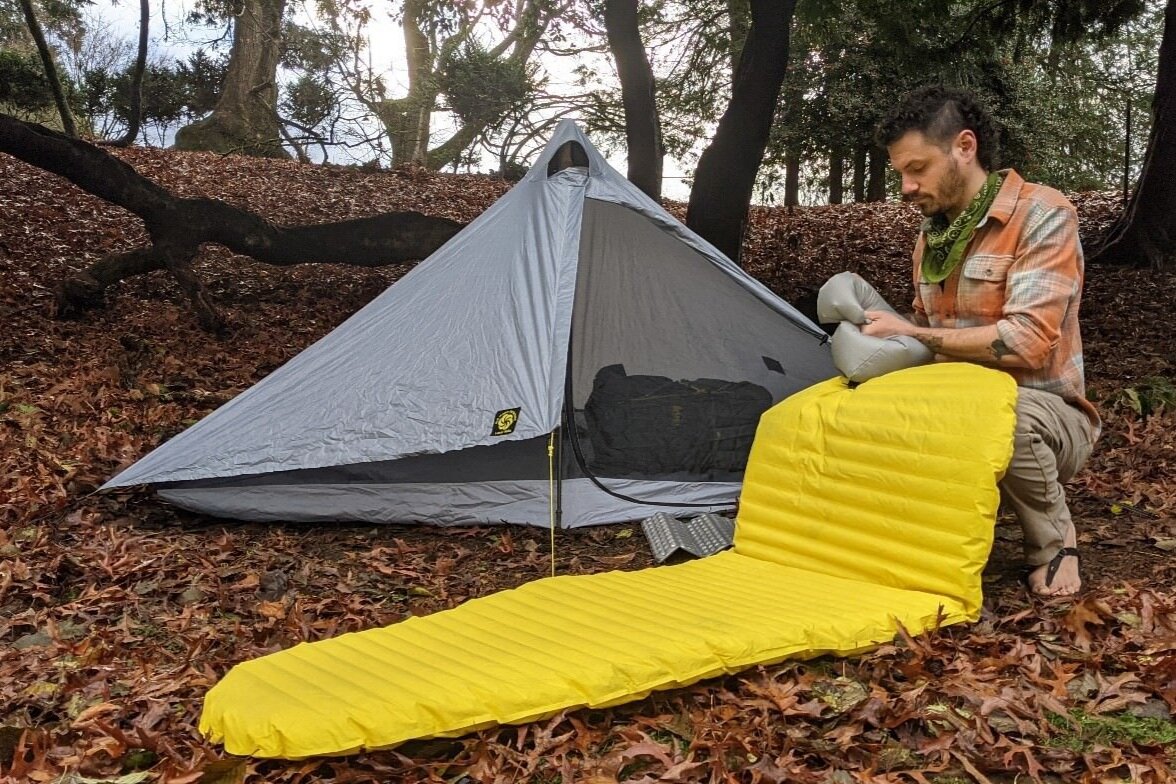
Weight & Packability
The Lunar Solo is a light and packable tent – which is why it’s a popular option for thru-hikers and those hiking long distances. At 1 pound, 10 ounces, the Solo is a very reasonable weight for a 1-person backpacking tent. And when you consider its price, it’s even more appealing. This model features lots of mesh to keep the weight down but employs a sturdy 20D silicone-coated polyester for the rainfly and burly 40D silpoly on the floor. This provides durability where you need it most but still packs up small. These materials compress to an 11 x 4.5-inch package, which will fit easily in most backpacking packs. You can also use a stuff sack to compress it further if needed. Since it’s a non-freestanding tent, you won’t have to deal with any manufacturer poles that add weight or bulk – except for the single trekking pole or tent pole of your choice used to pitch the tent. The small packed size is a plus for long-distance treks, where keeping weight and bulk to a minimum will be a top priority. There are certainly lighter DCF shelters out there, but they’re often much more expensive.
You will have to sacrifice some ease of setup and a bit of comfort in an ultralight tent design like the Lunar Solo. The first few times you set it up will be the most challenging. But once you’ve had a bit of practice, the setup will go fairly smoothly. That said, non-freestanding tents like the Lunar Solo will always require more attention and time to set up, which can be a dealbreaker for those who want an easy, straightforward freestanding tent design. Setup with the Solo can be particularly challenging on uneven terrain, rock-hard ground, or windy conditions. The interior of the Lunar Solo is pretty minimal, with one small pocket and the most headroom near the middle pole of the tent. The tent body packs down small, but you must bring enough tent stakes and a trekking pole for a proper pitch.
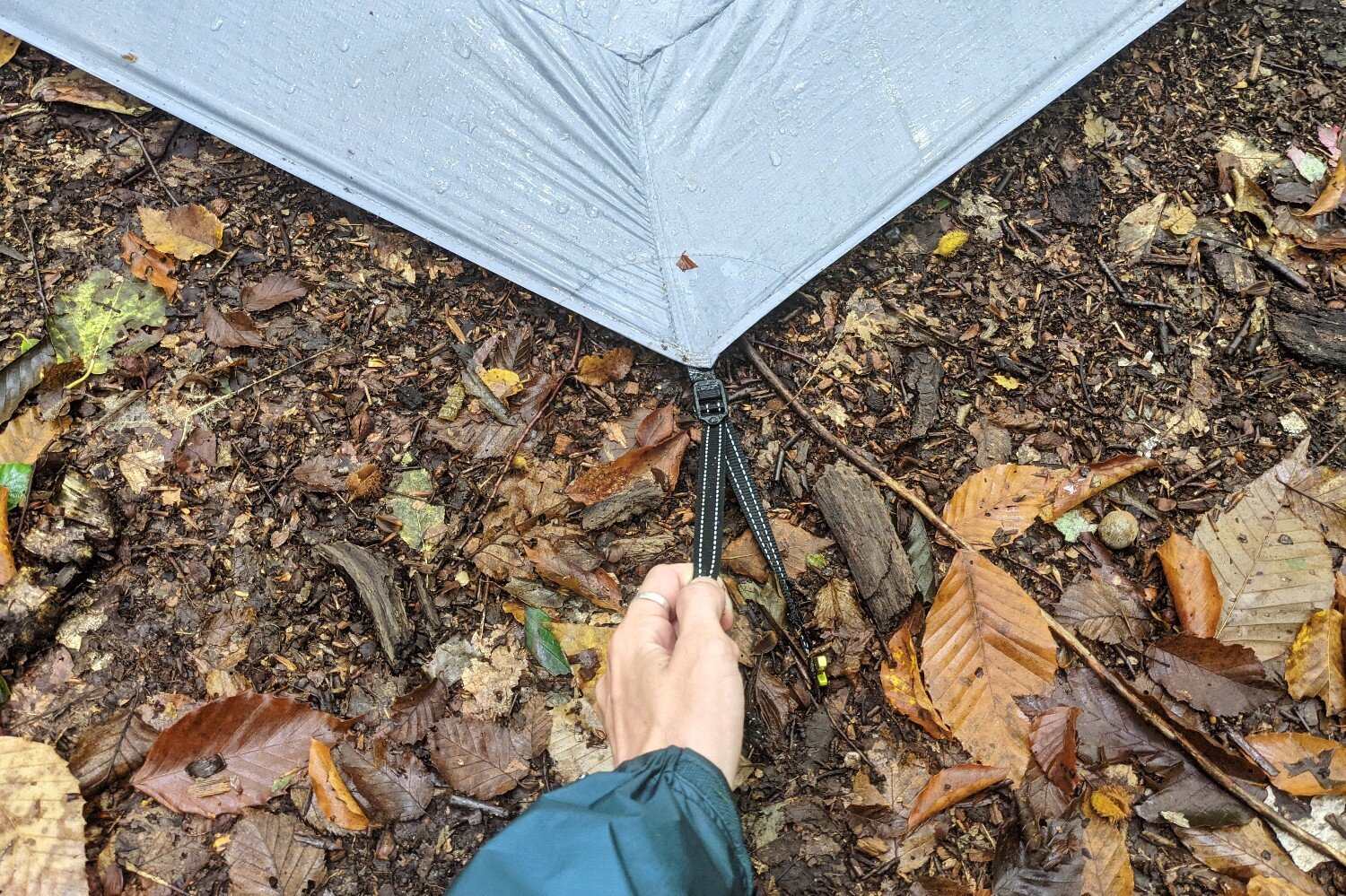
Weather Resistance
The Lunar Solo performs well when the weather rolls in. Its pyramid-like shape and steep sidewalls efficiently shed rain and very light snow, preventing water from pooling and reducing the risk of leaks. The lightweight yet robust fabric – a silicone-coated 20D Polyester on the rainfly and a burly 40D on the floor – can handle storms and blustering wind to keep you dry and protected. The bathtub-style floor also helps prevent splashback. Its zippered vestibules make it fast and easy to open and close, and these fabrics dry fast when the rain is done.
We like that the vestibules sit about a foot off the ground to enhance airflow and reduce condensation inside the tent. Combined with the mesh surrounding the bathtub floor and a large rooftop vent, the Solo is highly ventilated to help keep the interior dry and comfortable. A unique prusik knot on the main guyline of the vestibules offers a comfy, clever solution for raising and lowering the rainfly height without leaving your tent: slide it down to protect your gear when storms roll in, or lift it high for maximum ventilation on clear nights. Plus, six guy-out points on the edge of the rainfly and four more on the rainfly body allow you to secure the tent to the ground in strong winds.
However, the Lunar Solo does have some limitations in challenging weather. Like all non-freestanding tents, the Solo needs to be pitched properly to perform its best, but it can be difficult to pitch on rocky or uneven ground. Condensation management can also present an issue: while the Solo handles moisture well, the single-wall construction and tight sloping walls of the design can lead to water buildup inside the tent in sustained rain, cold weather, and damp conditions. Also, the tent doesn’t come with factory-sealed seams, so you’ll need to pay an additional fee or do it yourself for the tent to be fully waterproof. That said, for most summer backpacking conditions, these are minor issues, and the affordability and weight savings of this tent tend to be worth it for many hikers.
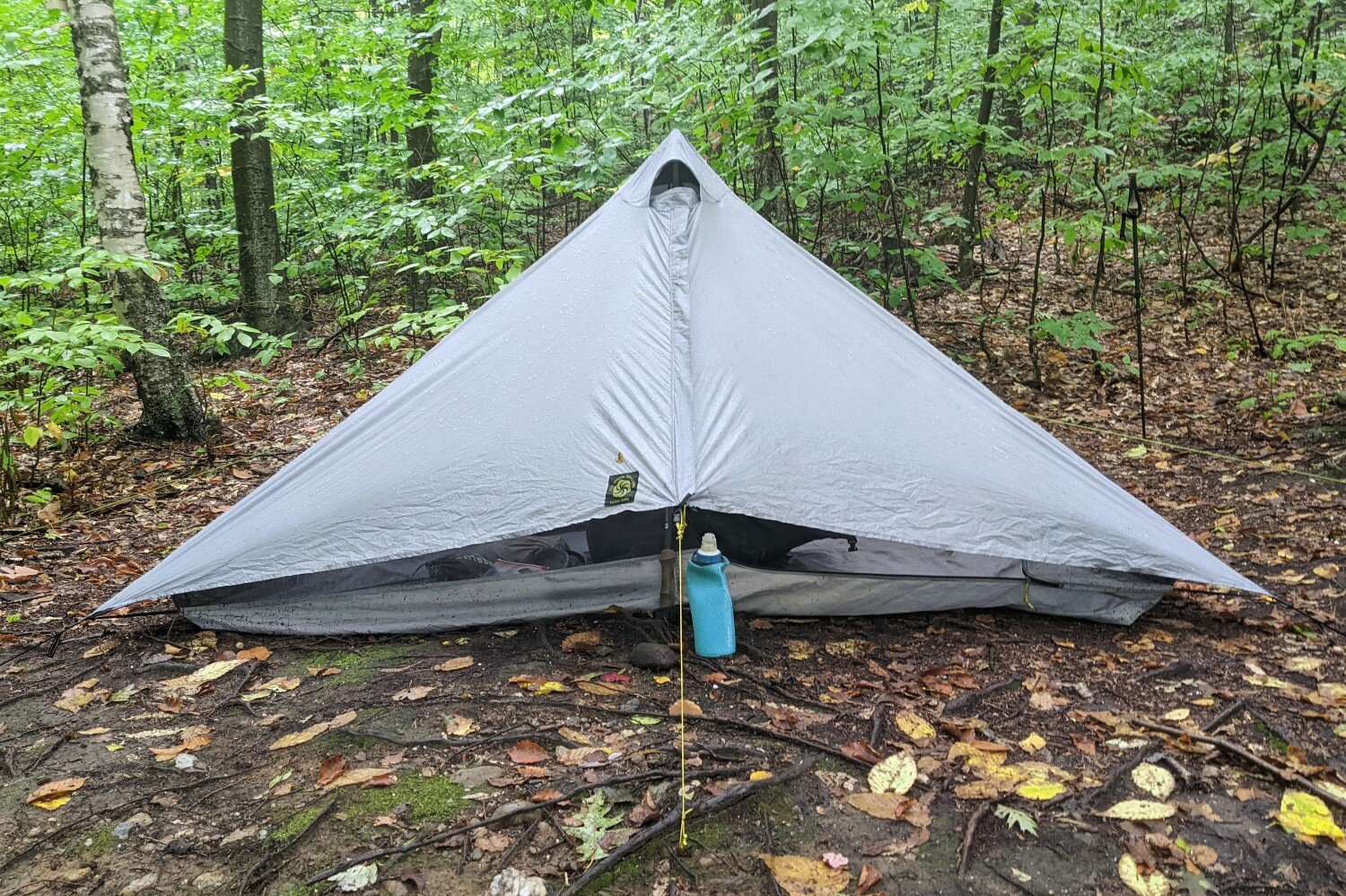
Ease of Setup
Pitching the Six Moon Designs Lunar Solo is a straightforward process, especially after you’ve set it up a few times. We highly recommend practicing setting up the Solo at home to save yourself any frustration in the backcountry, as it can be a bit challenging at first. Luckily, this model’s straightforward step-by-step instructions, simple design, and minimal number of components mean it’s easy to master after only a few tries. Once you’re well versed in the steps, one person can pitch the Solo in about two minutes: set up the center pole, stake out the guylines, and tighten the tent until all sides are taut and straight. This simplicity is perfect for setting up when weather moves in, it’s dark in the evening, or when you’re tired after long miles.
However, the Lunar Solo’s non-freestanding design can be a bit challenging in rough terrain. This tent is easiest to pitch in flat campsites with firm soil, but driving in tent stakes or using natural anchor points like rocks and logs can be difficult when the ground is rocky or uneven. It’s also tough to pitch in high winds and hard rain compared to freestanding tents that need few adjustments. As mentioned above, new users might find the initial setup intimidating due to its non-freestanding nature. That said, once you’re familiar with how to pitch the Solo, you’ll forget you ever had a hangup about it.
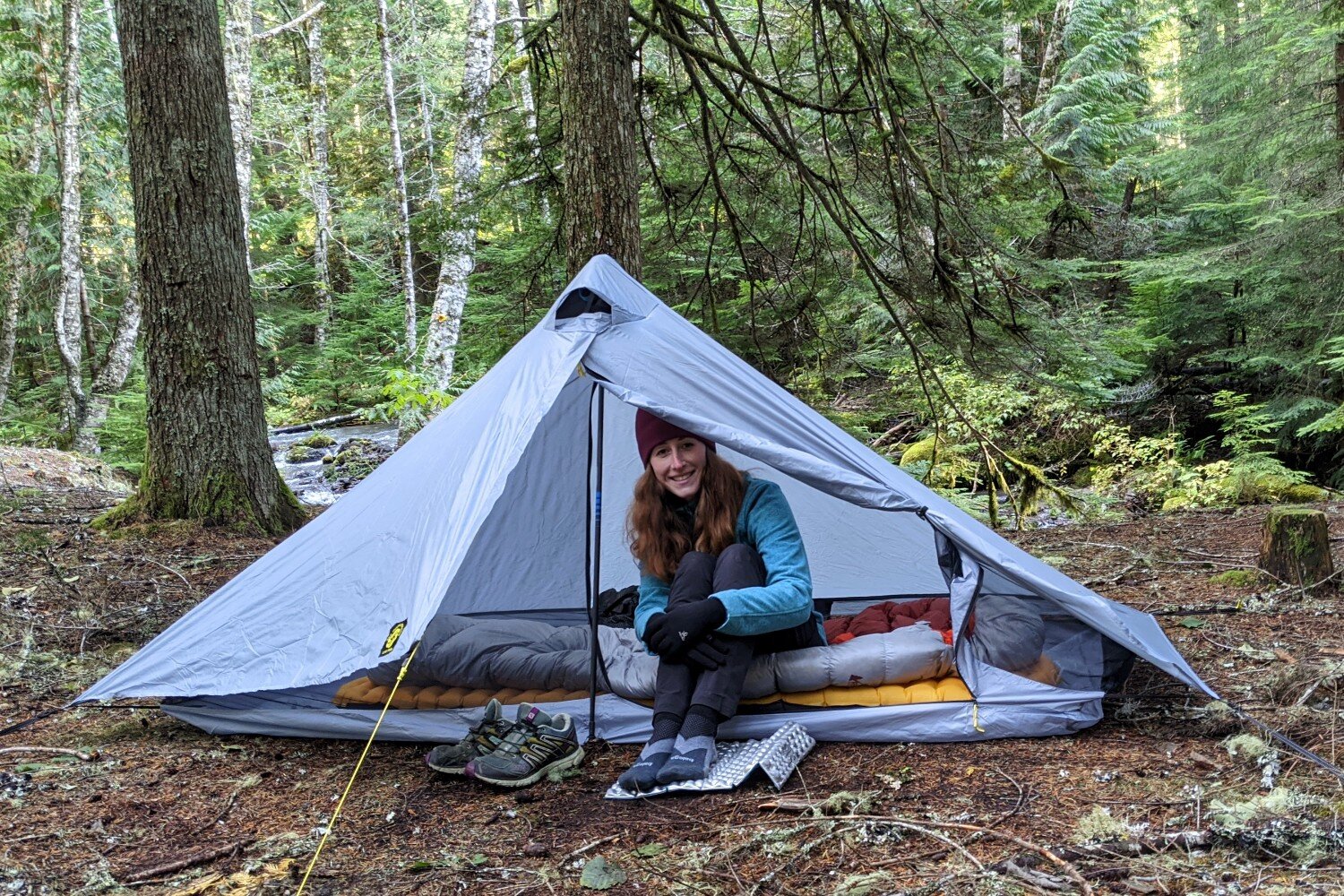
Durability
The Lunar Solo’s attention to detail and strong materials make it a reliable summer shelter in typical backcountry conditions. It uses a strong 20D silicone-coated polyester on the rainfly that holds up well against the elements and howling winds, and its 40D floor is resistant to punctures, abrasions, and rough terrain. You can pick up a small footprint for added durability, although we’ve not used one, and the tent has held up for thousands of miles. The absence of poles also means fewer parts that can break or malfunction, and the high-quality stitching and optional seam-sealing give this tent even more protection. Double stitching and reinforced corners contribute to the tent’s longevity.
However, there are some limitations to the Lunar Solo’s durability. The non-freestanding design can also increase wear on the tent’s fabric and guylines, especially on rocky ground and in high winds. Additionally, the tent doesn’t come factory seam-sealed, which means you’ll need to spend more money or time to completely waterproof it. Still, this tent is built for long distances, and with a bit of TLC and regular maintenance, it will last for many years of rough use.
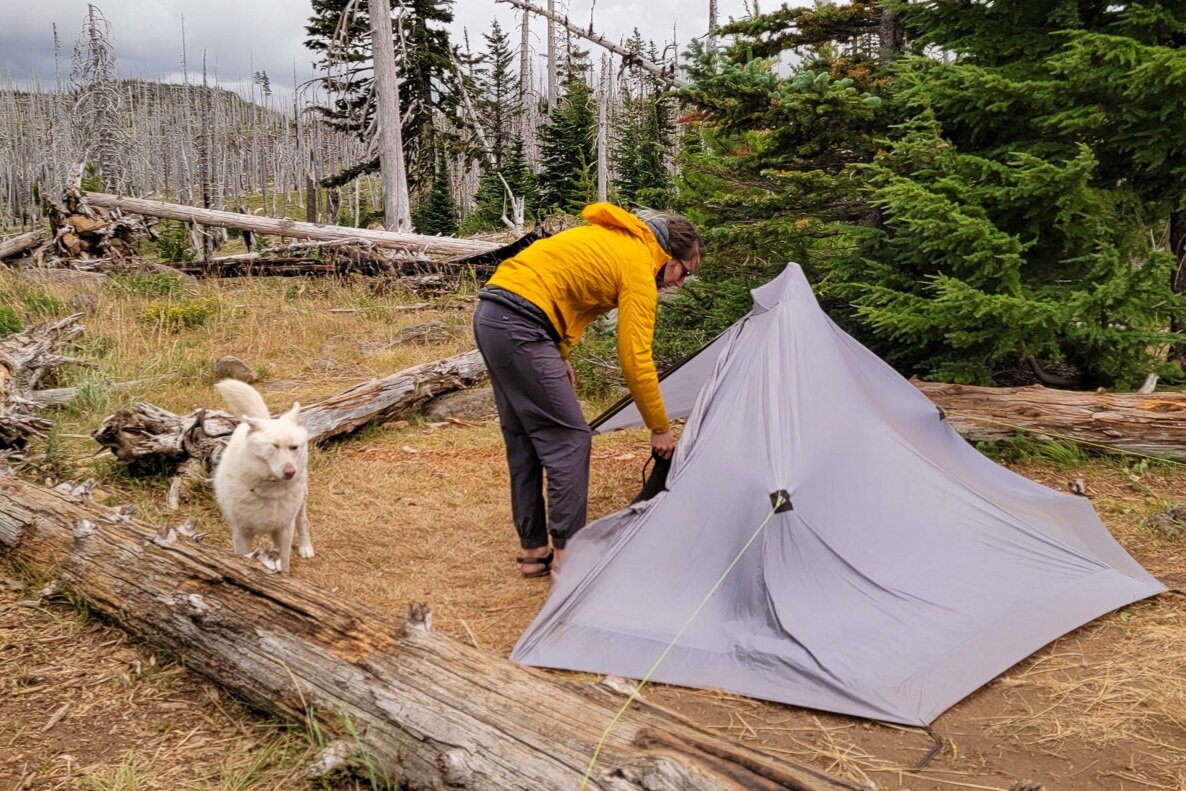
Should you Buy the Six Moons Designs Lunar Solo?
The Six Moon Designs Lunar Solo is a solid option for ultralight, long-distance backpackers who don’t want to spend an arm and a leg for a lightweight and roomy tent. Custom-made for solo hikers, the Solo is a spacious, easy-to-set-up refuge that won’t bog you down with extra weight. Its sleek design packs down small, making it an excellent fit for folks needing a compact but comfortable shelter while covering thousands of miles on foot. Whether you’re braving unpredictable weather on a months-long thru-hike or simply enjoying a week under the stars, the Lunar Solo gets the job done. It’s one of our top choices for single hikers who want a bare-bones shelter to take on summer backcountry trips while keeping costs down.
On the flip side, the Lunar Solo is not the best fit for folks who want a lot of headroom, abundant internal storage, or a super easy pitching process. Its single-wall design can lead to interior condensation, and the semi-freestanding design can be challenging to pitch in harsh weather or on rocky terrain. Additionally, this tent would not be our first pick for shoulder seasons or harsh weather, but it’s still a great choice for the typical summer backpacking adventures most hikers take. Overall, the Six Moon Designs Lunar Solo is an excellent choice if your main priorities are saving weight and money.
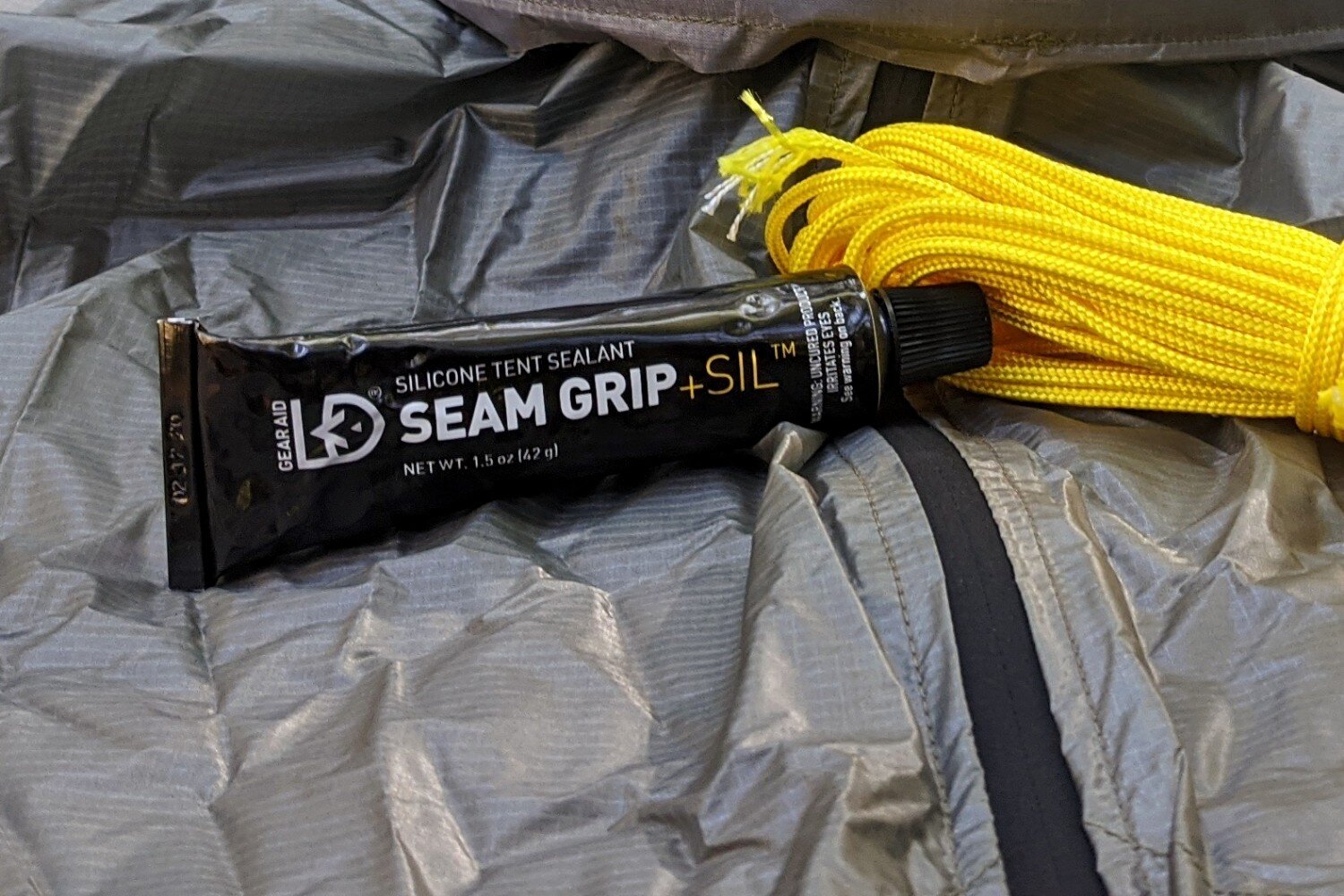
What Other Backpacking Tents Should You Consider?
Six Moon Designs Lunar Duo Review: The Six Moon Designs Lunar Duo is the two-person version of the Solo. It’s a bit more than a pound heavier and more expensive, but it’s wider and longer for two, making it a better fit for pairs who want the same comfort and packability and like to spread out.
Zpacks Plex Solo Review: The Zpacks Plex Solo is a non-freestanding, one-person tent with a spacious interior similar to the Lunar Solo. It’s one of the lightest solo shelters in the world, weighing over a pound less than the Lunar Solo. Its DCF fabric offers better weather protection, and overall, the Plex Solo is among our favorite ultralight one-person shelters on the market. The big downside is that it costs nearly double the price.
Big Agnes Tiger Wall UL2 Solution Dye Review: The Tiger Wall UL2 is much different than the Lunar Solo since it’s a double-wall, semi-freestanding tent. It does weigh almost a pound more and costs more too, but you’ll get a more comfortable tent that’s easier to pitch, has more headroom, and tons of interior storage. You can also fit two hikers inside the Tiger Wall UL2, though the fit is a bit tight. This tent is a good fit for hikers who want to balance keeping weight to a minimum with ease of use and comfort to a maximum.


